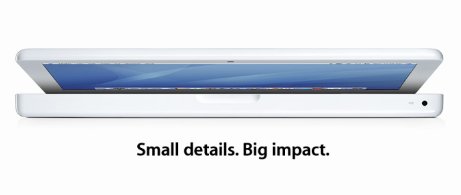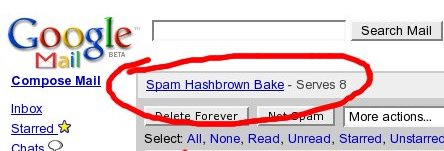… and why Apple can’t be bothered to properly localise Apple keyboards this side of the Atlantic.
But I should really start at the beginning. Basically, for a long time now I’ve been pondering a decision to buy a brand new MacBook. I came to the conclusion that I will, but I’ll wait for not only Mac OS X Leopard, but also hopefully for an Intel Core 2 Duo (Merom) version, fingers crossed.
So today I saw a MacBook ‘in the flesh’, not for the first time, but I suddenly noticed that the keyboard layout was rather strange. Basically, British layout keyboards have some minor differences to US ones, including having a £ sign located at Shift+3, and having the “ character at Shift+2, not Shift+’ (the @ is then located at Shift+’ instead). Plus, also the # sign is somewhere else… you get the idea. It’s standard QWERTY with some tweaks.
Now the MacBook (and every other Mac in the, ironically named, PC World store) had the £ key in the correct place, but all the other keys were US style.
This would be a major problem for me, as I’m so used to typing with the British layout, I’d get endlessly frustrated having to hunt around actually looking at the keyboard to find a key. In fact, I couldn’t see the hash key (#) anywhere on the Apple keyboards! Not that I wouldn’t get over switching to the US layout, but you see, every other keyboard over here is in the standard British layout described above. I do not want to learn two different keyboard layouts and have to think which one to use!
A look in System Preferences revealed that the MacBook believed it was using a British keyboard layout and I couldn’t find any other layout among the many localised keyboard setups that seemed to offer the proper setting. Imagine if I plugged in the keyboard I’m using now. Like 99.99% of keyboards over here, it’s in the British configuration. I’d press “, but end up with an @ – I’d end up getting very frustrated.
Thankfully, I’m not the first to discover this and Phil Gyford has devised a solution which involves installing a custom keyboard layout. Thank you, Phil! Without this I may well have had second thoughts about my MacBook purchase, which I’ll make as soon as Leopard is out (provided they’re not just about to release a Core 2 MacBook at that point).
It won’t fix the labelling of the keyboard, but to be honest I won’t be looking at that while typing, will I?

Small details. Big impact. Like having the wrong keyboard layout that almost made me think twice about getting a Mac.
Seriously, sort it out, Apple. If every other manufacturer can do it (seriously, every computer sold in the UK gets it right), then surely you can.
You almost scared me off your entire product range. And you were saved only by a hack by a user of your products.
OK, end of rant.





